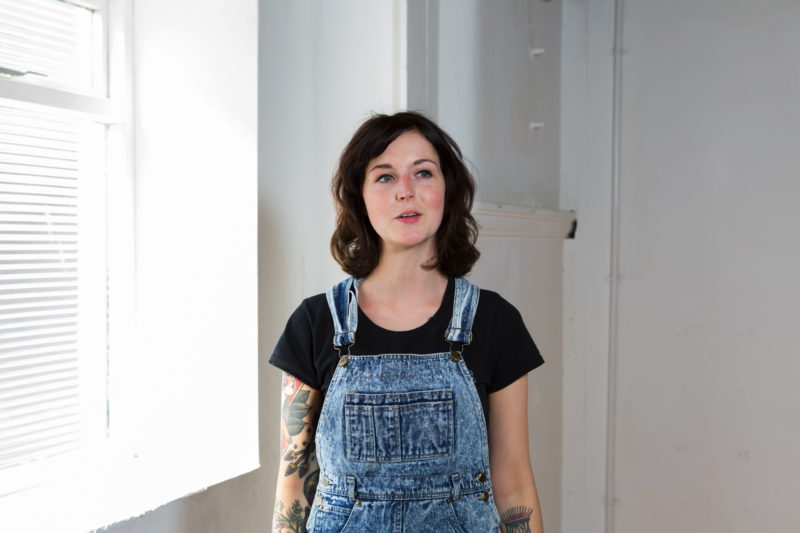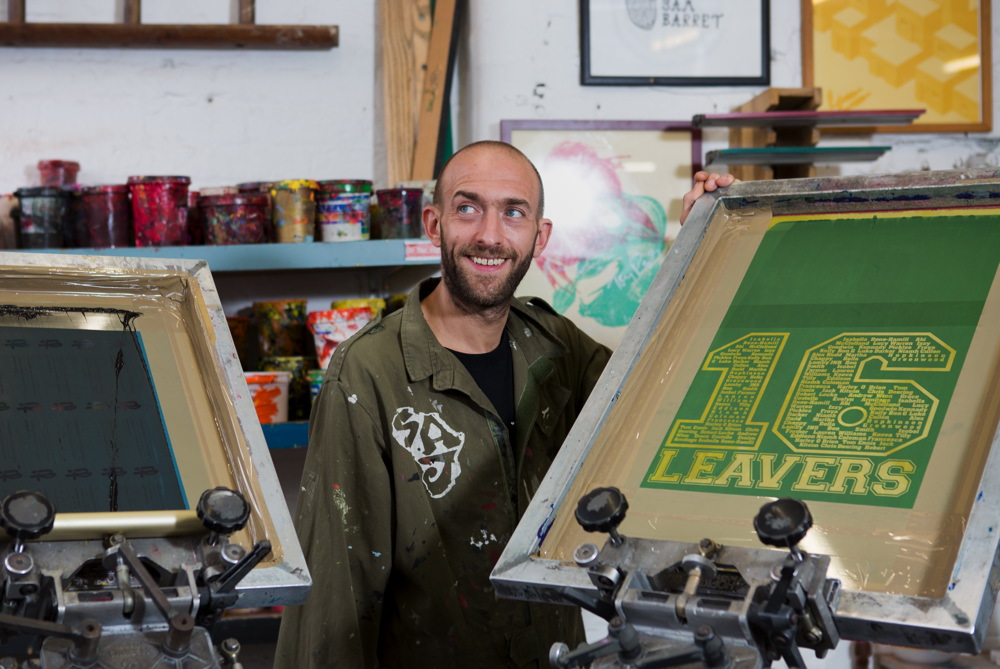Creative tension
In the fourth part of our series on urban areas on the up, we're in Holbeck Urban Village and Mabgate in Leeds
At the north end of Leeds city centre sit rows of dilapidated factories and warehouses around the street of Mabgate. Two miles south, on the other side of the river Aire, are beautifully renovated mills now housing the digital industries of the future. On the surface these two areas have little in common, but they each tell a story of what happens when the totemic enterprises of a past age fade away and creative communities and private developers jostle to take advantage.
Late on a Friday afternoon, the young creatives of Holbeck Urban Village – graphic designers, social media and marketing whizzes – slip out of work and into the trendy bars that neighbour their offices. Surveying these ex-factories and mills – the Round Foundry Media Centre, which now incubates start-ups like landscape architect Tim Reid’s Urban Wilderness, Tower Works and Marshall’s Mill – is Paul Taylor, director of Creative Space Management, the company that manages these magnificent old industrial powerhouses. “It’s really nice to see this new generation of innovators coming in and making their way,” he says.
“These buildings are just empty shells without people occupying them.”
These buildings were the beating heart of Victorian Leeds before falling into decline. Here flax was spun and steam engines manufactured. The grand, ornate Italianate Tower Works indicates the confidence that oozed through the area. But, says, Taylor, they must also have a contemporary purpose.
“These buildings are just empty shells without people occupying them. They’re just faded gems from a former past,” he says, referring particularly to the controversial plan for Burberry to open a £50 million manufacturing centre around the site of Temple Works, a grade I-listed former flax mill, with an elaborate Egyptian-style facade inspired by the Temple of Horus. In the latter half of the twentieth century it was the office for Kay’s Catalogue until it folded in 2004, and has most recently been home to an arts and cultural venue. There is some uncertainty about the future use of the historic building – whether part can again be used as a public venue, and over Burberry’s plans after the company was forced to clarify its intention to proceed with its investment after Brexit.
Speaking before that vote, Taylor says he is broadly supportive of Burberry’s plans, although he admits it would have been fascinating to see the building transformed into an events space. “What I don’t want to see is these buildings sitting empty and decaying. We shouldn’t be scared about adapting these buildings sensitively to new uses.”
Holbeck Urban Village was designated in 1999 and development began in earnest a few years later. Ten years ago, says Taylor, Leeds was renowned for being the biggest financial centre in the country outside London. “But I think more and more Leeds is getting known for innovation, entrepreneurialism and for creative and tech. It’s always easier to articulate if there’s some focus and certainty and over the past decade Holbeck Urban Village has very much provided that focus, because there’s not actually many places in the UK where you’ve got literally 150 creative and technology businesses all working in a few buildings. That is quite unique.”
Development stalled here during the recession but have picked up over the last 18 months. Residential housing is due to be constructed. HS2 should eventually reach Leeds. Ambitious plans are afoot for the huge South Bank regeneration programme, Europe’s largest, across the south side of the river – from the west end where Holbeck Urban Village is located, to Leeds Dock in the east where Sky recently established a technology hub, and the central area where the old Tetley brewery is now a contemporary arts centre and neighbouring Duke Studios, founded by James Abbott Donnelly and Laura Wellington in 2011, provides a range of workspaces, creative services and facilities. The regeneration aims to create 35,000 jobs.
But there is a flipside to the development boom, particularly for grassroots creatives and artists. Over in Mabgate, Joe Duffield perches on his workbench, sipping a cup of coffee. He designs and prints t-shirts from Byron Street Mills a series of small ex-industrial units. He moved in five years ago, attracted by the cheap rent because of the rundown condition of the area. “It was decrepit,” he says. He ripped up the floor, reglazed the windows and transformed it into a creative space.
Watson says there is a problem of artists being able to access affordable space
Surrounding Byron Street Mills are more art spaces, a co-operative bike repair shop, a Hackspace workshop, an arts centre offering young people access to art and music, alongside light engineering firms, disused ex-industrial spaces and derelict pubs. Where Holbeck’s regeneration is packaged as the triumph of digital and creative industries, here resident artists have little faith in sticking around long term. Because of development at the northern point of the city centre, with the construction of the Leeds Arena and the £165 million Victoria Gate retail space due to open later this year, developers have started sniffing around, doubly attracted by the emerging creative scene. Duffield reckons a dozen surveyors have visited over the last year. “Unfortunately it’s a double-edged sword. This area is getting regenerated and coming up nice, which is kind of good, because it means the street is a little bit cleaner and they pick up rubbish. But the rent is going up, so we feel we’ve got another couple of years left then we might have to move.”
It’s frustrating but, explains Duffield, comes with the game. “My view on life and society in general is the poor, creative people tend to come up with all the good ideas and do all the cool shit and then the people with the money either copy it or take over. It’s well frustrating, because we’ve been here five years and we made this place what it is. You’ve just got to hand it over and say: ‘We’ve got to do it again somewhere else.’”
Duffield’s concerns are shared by other artists in the area. Emma Hardaker, programmer for arts venue Lady Beck Studios – a new project for the team behind Assembly House studios in Armley – says they were attracted to Mabgate because of its existing community of artists and close proximity to town, attracting a different clientele to come and see their work. The same applies to Live Art Bistro (LAB), an artist-led venue and curatorial team based at Regent Street just off Mabgate. The LAB team has noticed rents increase and were shunted next door at just two weeks notice earlier this year.

“With the shift in town there is a constant concern it is going to disappear. Because this space has got so much potential we wanted to get it where it needed to be to make it more sustainable, to stay and not lose it to being crushed by a bulldozer,” says Hardaker.
Adam Young who, along with Matt Allen and Jessica Sweet, manages LAB, adds: “The projections for this area for the next five years are that we’ll all be kicked out. That’s just a fact so we’ll have to find the next area – that’s what gentrification is.”
East Street Arts (ESA), a fixture of Leeds’ art scene since the mid-1990s, also has its headquarters just off Mabgate. ESA works with the council and landlords to take leases on buildings awaiting development and give artists temporary spaces. It currently has over 100 such spaces across the country. But, admits co-founder Karen Watson, there is a general problem in Leeds of artists being able to access affordable space on a more long-term basis, which she often discusses with the council and Arts Council.
“I do think Leeds has been one of the worst for taking whatever happens to that building as long as it’s the right amount of money on the table, although it’s changing. That doesn’t protect any area of the city or any organisation that actually brings a lot of social capital to the city. We don’t have that much money. The arts sector, the creative industries – we can’t compete with those developers, so where’s the protection for them? Because you really need us to keep Leeds the vibrant city that it is.”
Richard Lewis, Leeds City Council executive member for regeneration, insists the council has been careful not to simply bow to the highest bidder. “Like all big cities we had those years where nothing happened and we are playing a bit of catch-up, but we are at the same time not just saying let everybody get on with whatever they want. It’s very much about sustainability, creating places that are good for peple to live rather than just who is next through the door waving a chunk of money about.”
The planned regeneration of South Bank has also raised concerns for those who felt the original Holbeck Urban Village initiative marginalised the existing residential communities of the historic area of Leeds, one of the country’s most deprived. Certainly, from the top of the renovated mills, one can see the physical divide between the sleek new world and the communities of Holbeck proper. Mark Hubbard, of Old Chapel Music Studios, in Holbeck since 1992 and where the Kaiser Chiefs started out, says those initial developments forced up rents and divided communities.
“In a way it was a good thing, a nice use of the space, but what it really did was import a lot of really upmarket industries from the city centre and from London into the area, which was good for the economy, I guess, but for the local neighbourhood not quite so clever, because it really did put a divide between the very run down older end of Holbeck – it’s one of the most deprived neighbourhoods in the country or it was at that time – and a very affluent new build close to the city centre.”
He started small charity Leeds Music Trust to get the local community involved in music, but struggled with funding after 2010. On the South Bank plan, he says it “makes us wary about how much is going to be accessible to the local population”.
Kevin Grady, director of Leeds Civic Trust, says the recession stopped the Holbeck regeneration in its tracks. “Things are starting to happen again now, but that gap – the wasteland between the township of Holbeck and the prosperity of Holbeck Urban Village – is a physical one but also it’s a psychological one. People living in Holbeck feel they haven’t benefited from any of the regeneration.”
The South Bank regeneration scheme promises to reconnect the suburbs of Holbeck, Beeston and Hunslet to the city centre and ensure its residents enjoy the prosperity created, and Grady says that
is critical.
Leeds is gearing up for a bid to be European Capital of Culture for 2023. Artists and creatives want to be a part of that, and many say the arts scene in Leeds is currently incredibly vibrant, with national artists relocating to the city. In the uncertain post-referendum world, it remains to be seen how the city moves forward with its wide-ranging plans, but it is clear that Leeds has big ambitions for the future.
Photos: Rebecca Lupton

Leave a reply
Your email address will not be published.